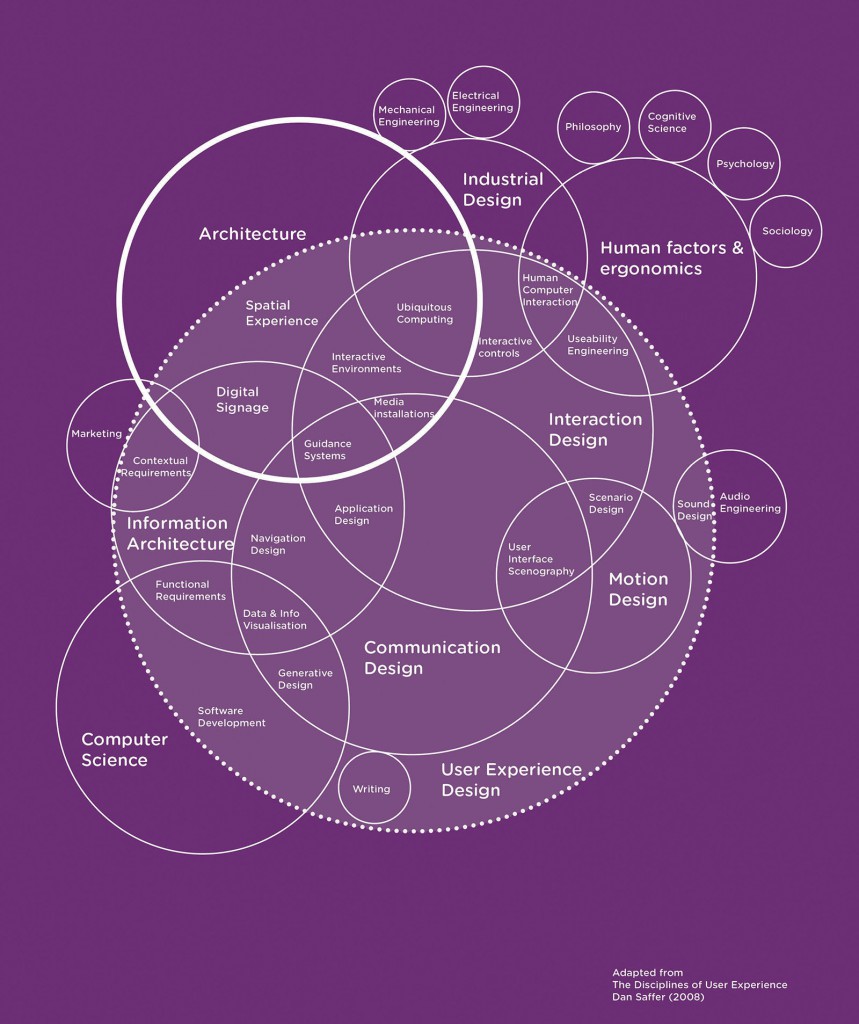



table of contents

previous articles

next articles
Feature article



CONTENTS
- Courtesy: Architects Registration Board of NSW
Adaptation and Collaboration
The role of the architect is evolving in an interdisciplinary world; Tim Horton shares early thinking from the NSW Architects Registration Board that defines some of the trends of change.
It is a mantra to many of us, but it is worth restating: good design is as much about how something works as how it looks. Despite the efforts of researchers, advocates, designers and educators across the country, the myth still prevails that design is a matter of taste, superficial and subjective. To some, it is about the object – not the creative process of invention, research, prototype, shortfall and success. For example, developing the Dyson vacuum cleaner famously involved over 5,000 prototypes1. Architecture’s bespoke response to a brief is different from the mass production of a vacuum, a tool or a vehicle (well, except for the repetitive planning of a high-rise apartment building or 800 room hospital). But it is useful to remember that architecture is one of many design disciplines that can apply design thinking to the environment we make and build around us.
Australia has flirted with the idea of design thinking for a while, but for a long time we did not really have a burning platform. We escaped the Global Financial Crisis and enjoyed decades of unbroken economic growth. In recent years though, Australians have come to realise we are facing some big challenges. New ideas are needed to respond effectively.
Big challenges demand new partners and new perspectives: smart businesses are inviting their workers to co-design strategy; citizens are co-producing policy; companies ask customers to help design new products. Architects co-produce too – synthesising the needs and skills of financiers and building owners, with engineers and planners, contractors and developers, trades and suppliers.
This integrative capacity is valuable. Listen to the conversations on a building site and it is a wonder anything ever gets built, as the builder and tradespeople talk about how to construct something, the engineer about how big it should be, and the client about what it will cost and when it will be finished2. Good architecture mediates and gives shape to these competing objectives. The architectural process is as valuable as the product, but usually it is the product that gets the attention.
Why is a regulator like the NSW Architects Registration Board (the Board) exploring this territory? We are clear on what we do, but we want to understand if and how it might change as things around us change. The Board wants to understand the many external and related influences on the practice of architecture – the output and the experiences of those who commission or engage with the result. Penelope Seidler AM posed it well during Sydney Architecture Festival 2014, asking rhetorically; “When is building architecture? Why?”
The Board is still working on an answer to that one. To address it, we think we need to get a better visual on the strategic architecture that drives the profession. We want to understand the drivers of change and disruption for the sector. Why? The Board believes this is the first step in understanding whether a form of adaptation strategy for the sector is needed, or if we know that the trajectory of the sector is towards a more collaborative model of practice (for instance, where the architect brings expertise, but may not lead), are there implications for how we accredit university programs that are more interdisciplinary? How is this reflected in the (soon to be released) National Standard of Competency for Architects – literally the yardstick of competence for the profession? The Board’s interest in developing these integrative, collaboration skills is just one reason we are a part of the MADE (Multidisciplinary Australian Denmark Exchange) by the Opera House initiative – a 10 year project designed to promote the integrative skills needed for collaboration between architects, designers and engineers.
The domains, fields and themes in the diagrams illustrated here represent a kind of inventory of connected challenges facing policymakers, professionals, and the community at large. The exact nature of these challenges is still being determined and any coherent response is still some way off. In many cases, these challenges have no one owner but are shared by a number of players in the sector. So it is likely any solution will come from shared effort. To see our way through this problem better, the Board has approached it as a designer would: sketching and diagramming to explore relationships, and outlining a thesis that can invite others to critique and contribute. The Board is interested in how these changing conditions impact on architecture. We have identified some domains in which change is happening rapidly, including fields in which we see this play out, and the areas in which we see this change exemplified.
Timothy Horton
Registrar, Architects Registration Board of NSW

FOOTNOTES
1. Dyson website: a new idea http://www.dyson.co.uk/community/aboutdyson.aspx
2. Prof Thomas Fisher, In the Scheme of things, p104 (adapted)
3. Dan Saffer,The Disciplines of User Experience, 2008












